by for the Ageless Team April 08, 2024

One of CBD’s great strengths as a supplement is its versatility; it can be eaten, dropped, inhaled, applied and inserted. While this is useful, if you’re new to it, you may be left wondering which is the best way to take it for you.
Each method comes with different benefits and will best suit different people. Some can be used to enhance its effect, and others are ideal if you prefer steady amounts released over time.
To help you find the best way to take CBD for you, let’s take a look at the five main ways to take it and the pros and cons of each. We’ll also introduce you to key factors influencing your choice such as cost, bioavailability and how much you may need to take.
There are 5 main ways to take CBD are:

Sublingual application refers to the process where drops are placed under the tongue. The CBD then passes through the thin membrane in the bottom of your mouth and passes directly into your bloodstream. This is by far the most commonly used method of ingestion. This is because sublingual application is not only one of the most effective methods, but it is also easily completed and requires no specialist equipment.
The types of CBD that can be consumed sublingually include:
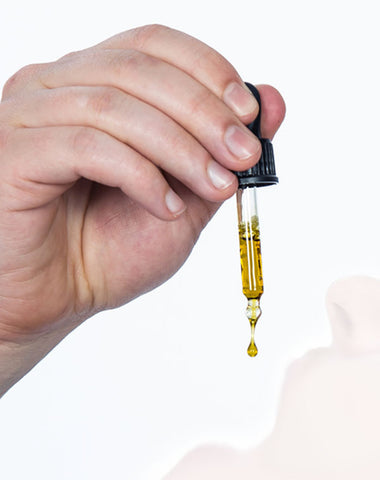 To take CBD oil sublingually, the process is simple:
To take CBD oil sublingually, the process is simple:
1. Fill the dropper, lift your tongue and whilst looking into the mirror gently squeeze out the desired number of drops.
2. Lower your tongue and hold the oil underneath for 1-3 minutes to ensure maximum absorption.
3. Swallow the remaining oil and take a drink or something to eat to wash away any aftertaste.
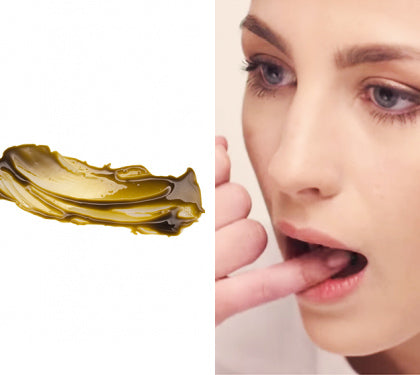 Taking CBD paste sublingually is a similar process to taking an oil under the tongue. The main difference being the paste is much thicker so, rather than using a dropper or spray, you will need to put the paste on your finger or a spoon.
Taking CBD paste sublingually is a similar process to taking an oil under the tongue. The main difference being the paste is much thicker so, rather than using a dropper or spray, you will need to put the paste on your finger or a spoon.
This is how you take a CBD paste:
1. Squeeze the desired amount of CBD paste onto your finger.
2. Smear the paste under your tongue or inside your back teeth on either side of the gums. Hold this for 1-3 minutes as you would with an oil.
3. Swallow the paste to absorb the remaining cannabinoids and take a drink if needed.

On occasion, customers using CBD sublingually report experiencing a slightly strange ‘fuzzy’ or ‘sharp’ feeling on their tongue or the back of the throat. It’s invariably a mild experience caused by the oil's sometimes strong, earthy, or bitter flavour.
There are a few ways to deal with this; one is to have a drink or something to eat after you take your CBD. The other way to avoid this is to choose a different application method.
One of the most well-known ways of consuming CBD is oral ingestion of edibles.
The types of edible CBD products available include:
 Capsules and gummies come in pre-measured amounts so it’s as simple as popping one in your mouth and having a chew or swallowing it down with your drink of choice.
Capsules and gummies come in pre-measured amounts so it’s as simple as popping one in your mouth and having a chew or swallowing it down with your drink of choice.
1. Remove the desired number of capsules or gummies from the pack.
2. Place the capsule on the tongue, swallow and wash down with a drink. If you choose to use a CBD gummy or other sweet, chew slowly so some of the CBD can be absorbed sublingually. This will increase bioavailability.
3. Eating after you consume a CBD edible will not only ensure your stomach starts to work on absorbing the cannabinoids but will also help to digest them more efficiently because they are fat-soluble.
 There are a number of benefits to consuming CBD edibles. These include:
There are a number of benefits to consuming CBD edibles. These include:
• When eaten cannabinoids are absorbed into the bloodstream at a much slower rate so they are longer lasting than other methods like vaping or taking the oil sublingually.
• The serving is pre-measured. So, you do not need to count drops.
• They taste better than CBD oils, which can have quite a strong flavour.
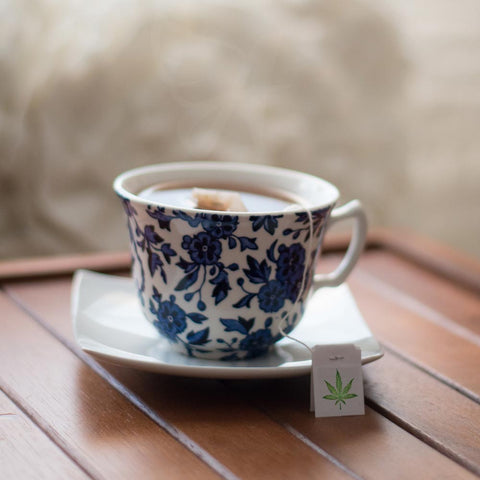 Drinking hemp tea is another way of ingesting cannabinoids in their raw form, such as CBDa and CBGa. CBDa is the precursor to CBD and is transformed into CBD by applying heat.
Drinking hemp tea is another way of ingesting cannabinoids in their raw form, such as CBDa and CBGa. CBDa is the precursor to CBD and is transformed into CBD by applying heat.
We recommend hemp tea as a complementary product to an oil, paste or edible. CBDa and the other cannabinoids found in freshly brewed tea work in conjunction with CBD to provide a stronger effect.
Hemp tea is made in the same way as you would a fruit or herbal tea.
Here is how to brew it at home:
1. Boil the kettle and add the water to the mug. Allow water to sit for one minute.
2. Add the hemp tea bag or infuser filled with leaves and allow it to steep.
3. Brew for 5 minutes for a mild flavour and up to 10 minutes for a stronger flavour.
4. Remove the bag or infuser and add honey or lemon juice if desired.
5. You can reuse the tea bag or leaves a second time (steep them for a little longer).
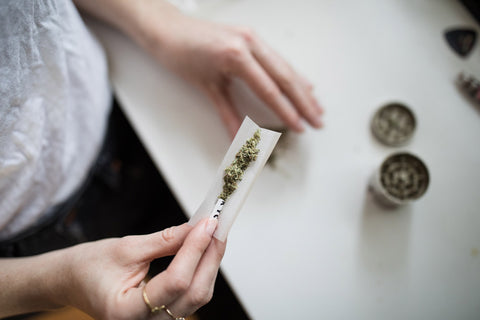 Vaping is very popular with those wanting to stop smoking tobacco.
Vaping is very popular with those wanting to stop smoking tobacco.
There is barely a high street in the UK that is without a vape lounge and a handful of e-liquid retailers. This makes vaping CBD very accessible as the method is familiar and the equipment is widely available.
You will need:
The process:
1. Prepare your e-liquid and vaporiser. Screw the cartridge into your pen or top up the tank on your mod box with a CBD e-liquid.
2. Turn the device on and take one small puff. Hold it in for a second or two and exhale. Do this 2-3 times and repeat as required throughout the day.

 Applying CBD topically is something that has been done all over the world for centuries. The skin is the largest organ in the body and it is packed with endocannabinoid receptors. There are many different types of CBD products that can be applied to the skin. These include:
Applying CBD topically is something that has been done all over the world for centuries. The skin is the largest organ in the body and it is packed with endocannabinoid receptors. There are many different types of CBD products that can be applied to the skin. These include:
• CBD lotions, creams and balms
• CBD lip balm
• Transdermal patches
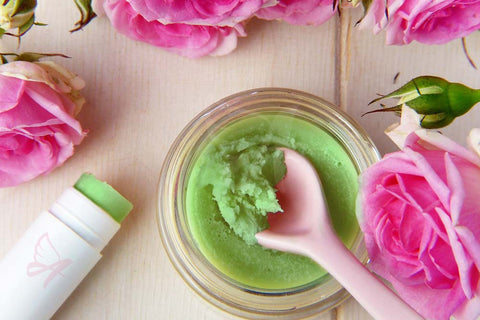 There are slight variations in how CBD can be applied when using a topical product. The simplest method is using a transdermal CBD patch. This is applied to your arm and you’ll absorb the cannabinoids as you go about your day. To apply a cream or balm is slightly different. You will need to:
There are slight variations in how CBD can be applied when using a topical product. The simplest method is using a transdermal CBD patch. This is applied to your arm and you’ll absorb the cannabinoids as you go about your day. To apply a cream or balm is slightly different. You will need to:
1. Clean the area of skin where you intend to apply the topical.
2. Take a small amount and warm it in your fingers.
3. Apply liberally to the intended area and massage or rub in until you see it has been absorbed. Applying after a shower or bath increases absorption because the pores are open.
 The 5th and least common way to administer cannabinoids is either vaginally or rectally.
The 5th and least common way to administer cannabinoids is either vaginally or rectally.
There are two main methods of application here:
• Suppositories for rectal insertion.
• CBD-infused tampons, which can be used for period relief.
When choosing which method of application is best for you, you need to consider a few key points such as bioavailability (how much CBD reaches your bloodstream), how long it takes to take effect and, of course, the price.
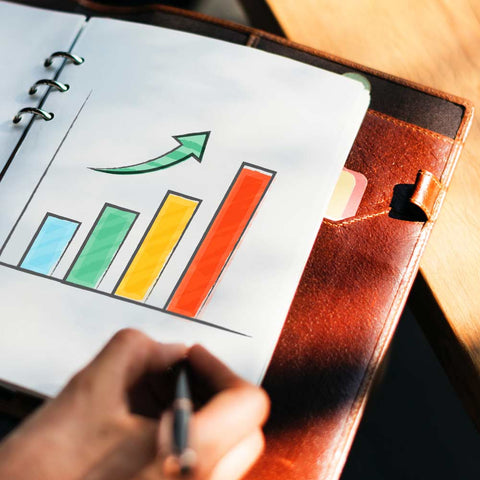
Bioavailability is the term used to describe how much and how quickly CBD will be absorbed into your bloodstream. A product with a higher bioavailability can work out much cheaper in the long term as you need to consume less to get the same effects. For example, taking a CBD oil under the tongue has a bioavailability rate as high as 35%, whereas eating a CBD gummy can be as low as 4%. So, you may need to take 8x the amount if eating a gummy when compared to taking an oil sublingually.
This could see you spending significantly more or less money depending on your chosen method.
CBD absorption rates
|
Method used |
Bioavailability |
Time to take effect |
|
Ingested or eaten |
4 – 20% |
30 minutes – 2 hours |
|
Under your tongue |
35% |
15 - 25 minutes |
|
Rectally |
8 – 50% |
20 – 60 minutes |
|
Inhaled or vaporised |
Up to 56% |
10 – 20 minutes |
|
Rubbed into skin |
Up to 45% but stays localised |
25 – 45 minutes |

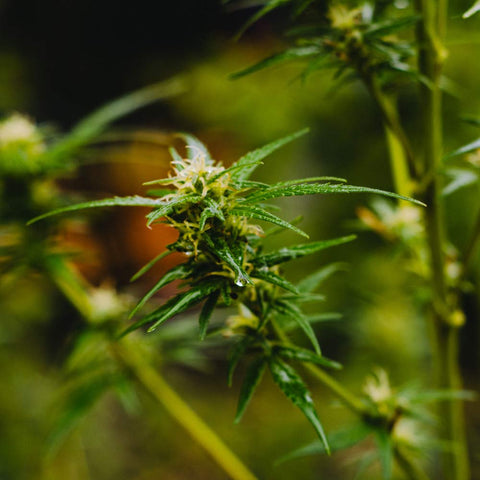
Budget is one of the most important considerations. Different product types have varying production costs, meaning those with extra steps and ingredients can be more expensive per mg of CBD. If you have limited funds, choosing an edible may be a bad choice because of its low bioavailability and higher initial costs compared to e-liquids and oils.
If budget isn’t an issue, you can make the decision based on other factors such as ease of use (not everyone likes counting drops and may prefer a capsule or edible containing the entire daily serving) and taste (oils can also have a slightly bitter aftertaste and e-liquids can come in a range of pleasant flavours).
This chart shows the average cost per mg of CBD for oils, balms, vapes and edibles:
|
Product |
Cost per 500mg |
Cost per mg |
|
CBD oil |
£24 - £33 |
4-6p per mg |
|
CBD edibles |
£14 - £45 |
3-9p per mg |
|
CBD balm |
£23 - £30 |
4-6p per mg |
|
CBD e-liquids |
£15 - £50 |
3-9p per mg |
 The answer to this question is dependent on several variables. Firstly, you should be aware that no two people are the same, so the amount required to achieve the same effects will vary.
The answer to this question is dependent on several variables. Firstly, you should be aware that no two people are the same, so the amount required to achieve the same effects will vary.
A good rule of thumb is to start with the minimum recommended amount (this will normally be on the bottle or accompanying information) for a week and see how you react. If it works stick with that amount, if not, you will need to increase it.
 Like with anything new, starting slowly is always the best way to go. Be patient, CBD can take time to have any effects and sometimes has no evident effects at all. Treat CBD products like you would any other food supplement, as a complement to a healthy lifestyle.
Like with anything new, starting slowly is always the best way to go. Be patient, CBD can take time to have any effects and sometimes has no evident effects at all. Treat CBD products like you would any other food supplement, as a complement to a healthy lifestyle.
In the first week, we would recommend taking no more than 10 to 20 mg per day. This can be broken down as 10mg in the morning before breakfast and 10mg in the evening before you eat. Most manufacturers also recommend a 10-20mg start dose and suggest increasing it by 50%, week by week, if needed.
Choosing the right CBD product depends mainly on what you need it for and how you'd like to use it. Consider how much you can spend and which method is most convenient for you.
CBD oil is a good choice for most because it is available in many strengths, has high bioavailability, is cost-effective, and can be taken in different ways: you can swallow it, put drops under your tongue, or mix it into food.
A combination of products is also an option. Many of our customers like to take CBD oils and complement this with hemp tea. Some prefer vaping during the day when they’re out and about and taking a paste right before dinner in the evening.
If you're not sure which CBD product is best for you, send us an email, give us a call or use the live chat option and we’ll happily guide you.

December 27, 2021
Hi Sylvia,
Yes, you can use OSI Magnesium CBD Cream on your face.
This is its suggested use (as listed under the product’s description):
“After a shower at night or 30 minutes before sleep, gently rub the OSI Magnesium CBD cream all over your face, neck and décolleté. We’ve also tested it on feet, legs, torso and arms and it is very pleasant. A thin layer goes a long way on the face before your regular night serum and moisturiser.”
Please let us know if you have any other questions by contacting us via email, chat or phone.
December 26, 2021
I have purchased magnesium CBD cream + melatonin (300mg CBD) can this be used on the face.? Iam looking to improve very poor sleep, and help osteoarthritis.
Thank you.
August 16, 2020
Hello Anne, the drops can indeed be massaged onto your skin with a base oil or mixed it with your favourite balm/cream or you can get a ready-made CBD balm/cream. The amount you take orally depends on many factors. Our recommendation is to start with the lowest recommended amount and increase the intake gradually, until you find the ideal amount to suit your needs. You can read more about how to take CBD orally and topically here:
https://www.fortheageless.com/pages/cbd-oil-uk-guide#jump4
August 16, 2020
Dear Gavin- for the first time I’ve purchased 10ml of Reach CBD 500mg strength. The directions suggest 3 drops under the tongue.
My question is can is this: can the oil be massaged into muscles; should the three drops be mixed with a base oil, such as olive oil?
Comments will be approved before showing up.
Tracked & signed
Orders over £35
Orders over £199
Soil Association certified
Chat, email or call
for the Ageless Team
Author
A mighty team of natural health researchers led by Daniel Perez Vidal. We follow strict selection criteria and test everything we retail, from ground-breaking food supplements to natural skincare products. Our main area of expertise is CBD.